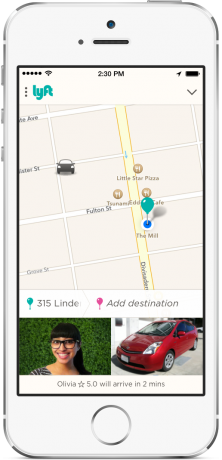
by Paige Pembrook
March 16, 2015
Uber and Lyft, the multi-billion dollar startups that connect people with on-demand transportation, will each need to persuade a California jury that their drivers are independent contractors rather than employees.
Each company’s drivers are challenging their status as independent contractors, which is crucial to the startup companies’ business models.
ALSO SEE: Uber to Create Jobs for 1 Million Female Drivers
On Wednesday, two United States District Court judges ruled that each case would need to be resolved by a jury, because the question of employment status proved too close to call as a matter of law under California’s traditional, and sometimes ambiguous, test.
The Independent Contractor vs. Employee Test
The juries will carefully consider the following factors when determining whether the drivers are independent contractors or employees: (1) Who controls the way the work is performed and, if so, how much; (2) Whether the drivers are engaged in a business distinct from Uber/Lyft; (3) Whether the work is a part of the Uber/Lyft’s regular business; (4) Who provides the vehicles; (5) Who invests in equipment or materials or helpers; (6) Whether being a driver requires special skill; (7) Whether such work is usually done under the direction of the principal or by a specialist without supervision; (8) Whether a driver’s “managerial skills” impact profits or losses; (9) How long the drivers work for Uber/Lyft; (10) Whether the work relationship is temporary or permanent in nature; (11) Whether the drivers are paid by the job or based on time; and (12) Whether or not the parties are under the impression that they are creating an employer-employee relationship, although this is not determinative.
The Gray Area
The problem is that Uber and Lyft drivers fall in the middle of the spectrum envisioned by these factors, especially on the issue of who controls the manner and means of the work, which is the most significant factor in the analysis.
The drivers have some control over their hours and customers, but the companies still provide instructions regarding customer service and require drivers to meet certain standards of behavior.
This lack of detailed control does not necessarily show the drivers are independent contractors.
A Similar Case
In a strikingly similar case, a California court held that a cab company’s drivers were employees, even though the company did not exercise any control over the details, because the company controlled the operation as a whole, the drivers were a crucial part of the operation, and the nature of the work made detailed control unnecessary. Uber and Lyft arguably fit that description.
In the upcoming trials, the juries’ sensitivity to the subtle differences in the Uber and Lyft business models will likely determine whether they find the drivers properly classified as independent contractors, unlike the traditional cab drivers previously held to be employees.
Such a shift towards liberalizing the test to accommodate features of emerging businesses would recognize the traditional test is an awkward fit for modern economic realities.
As Judge Chhabria wrote in his ruling on Lyft, “The test the California courts have developed over the 20th Century for classifying workers isn’t very helpful in addressing this 21st Century problem.”
What Are The Stakes?
For Uber, Lyft, and similar “on-demand” startups, the stakes in these cases are extremely high.
Findings against Uber and Lyft could sharply raise their costs by forcing them to pay their drivers’ Social Security, workers’ compensation, unemployment insurance, and reimbursement for expenses.
Another company that switched all its workers from independent contractors to employees increased labor costs by approximately 40 percent.
Furthermore, with Uber recently being valued at $41 billion, an unfavorable decision could have an epic impact on investors.
Decisions are in favor of Uber and Lyft could affirm their business model as an example for the other participants in the sharing economy and pave the way for similar companies in the future.
Whether encouraging or chilling, the outcome in these cases will directly impact other startups that rely on similar networks of service providers.
The Uber decision can be viewed here.
The Lyft decision can be viewed here.











